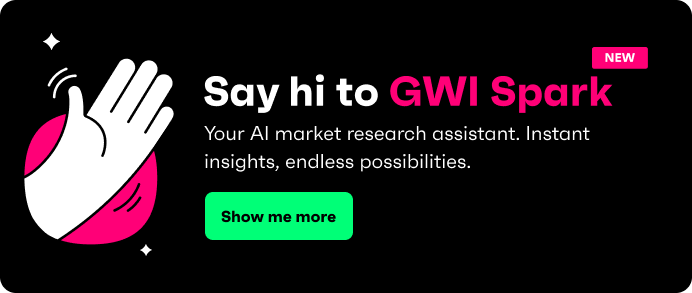It’s been said before, and we’ll say it again. Marketing today is a noisy game, and cutting through all that noise isn’t just about having the best product. It’s about getting the right message in front of the right people, at the right time.
That’s where target market segmentation steps in.
Target market segmentation might sound like a bit of a buzzword at first, but in reality, it’s the foundation of smarter marketing, stronger engagement, and better ROI. In this guide, we’ll unpack what segmentation really means, why it matters, and how to make it work for you. After all, don’t we always want the most out of every marketing effort?
Why target market segmentation matters for businesses
Generic messaging is a thing of the past; there is no “one-size-fits-all” solution. Today’s consumers expect you to know who they are and what they care about. Segmentation is how you deliver on that expectation.
By dividing your audience into defined groups, you can tailor your approach to fit different needs, behaviors, and mindsets. The result? Higher engagement, stronger conversions, and a marketing budget that works harder, and costs kept tight.
For advertisers, it means audience-first media plans that actually perform. For strategists, clearer journeys and cleaner insights. And for brand or marketing leads under pressure to prove ROI, segmentation turns complexity into clarity,and clarity into results.
What is target market segmentation?
At its core, target market segmentation means chopping up your audience into smaller, more defined groups (figuratively speaking, of course) based on things they have in common, like behaviors, needs, or attitudes. It’s how brands stop talking to everyone and start talking to someone. The result? Messaging, products, and experiences that resonate personally.
Segmentation sits at the heart of the STP model - segmenting, targeting, positioning. You group your audience, decide which segments to prioritize, then shape your brand and messaging to speak directly to them. With your marketing teams knowing more about your audiences at this deeper level, together you’re able to get closer to that all important purchase.
And it matters. Our data shows that 30% of consumers say products or content relevant to their interests would motivate them to promote a brand online. Over 1 in 4 consumers want brands to offer customized or personalized products.
In short, people expect relevance. Segmentation gives you the framework to deliver it at scale.
The four main types of market segmentation
There’s more than one way to segment an audience, and the smartest strategies often layer different types together. Here are the four most common approaches, and how each one helps you connect more meaningfully with your customers.
Demographic segmentation
This is the most well-known way to segment, and often the place to start. It uses factors like age, gender, income, education, and occupation to group people. It’s straightforward, but powerful when applied with intent.
Example: Marketing insurance products messaged differently to Gen Z digital natives vs. baby boomers planning for their retirement.
Geographic segmentation
Where someone lives shapes what they need and how they engage. Geographic segmentation groups people by country, region, climate, or even population density. It’s especially useful for tailoring offers around local trends or seasonal shifts.
Example: Promoting outerwear in colder regions as winter sets in, and vice versa.
Psychographic segmentation
This is where things get personal. Psychographic segmentation gets deep into values, lifestyle choices, attitudes, and interests. This is all about what people care about, not just who they are.
Psychographic segmentation is how you build emotional connection, not just demographic relevance. It’s that one step deeper into the segmentation space, and it works.
Example: Positioning travel gear for adventure seekers who spend their free time outdoors. Whether it’s mountain biking or cave diving they’re into, you can hit the right person with the right message, at the right time.
Behavioral segmentation
This type focuses on actions. What people buy, how often they engage, their brand loyalty or usage habits all apply. It’s the engine behind performance marketing and retention strategies. When you know how someone behaves, you can meet them with the right message at the right moment.
Example: Rewarding frequent shoppers with loyalty perks, while re-engaging lapsed customers with tailored offers.
Emerging and advanced segmentation techniques
But there’s more. There always is - segmentation isn’t standing still after all. Beyond the big four, a new wave of smarter, sharper methods is redefining how brands connect with their audiences.
- Technographic segmentation looks at the tools people use, like their tech stack, device preferences, or digital behaviors.
- Firmographic segmentation focuses on B2B audiences, grouping companies by size, industry, revenue, or growth stage.
- Attitudinal segmentation explores beliefs, motivations, and openness to innovation, offering deep insight into what really drives decision-making.
AI and machine learning are raising the bar even higher. These tools can spot hidden patterns, predict future behaviors, and automate segmentation in real time. This blend of human and machine can help you move from reactive to predictive marketing.
Platforms like GWI make this kind of advanced segmentation possible, unlocking rich psychographic and attitudinal insights that go way beyond basic demos. This is segmentation with depth. This kind of tech is where future-ready marketing lives.
Benefits of target market segmentation
Segmentation doesn’t just make your marketing smarter, it makes it more effective across the board.
When you know who you’re talking to and what they care about, everything works harder:
- Your messages hit home, driving stronger engagement.
- Your media spend is more focused, reducing customer acquisition costs.
- Your product finds the right audience, boosting conversions.
- Your experiences feel personal, improving retention and long-term loyalty.
These aren’t just side benefits, they’re core drivers of sustainable growth. In a landscape where attention is limited and expectations are high, segmentation isn’t something to approach as a nice-to-have… it’s essential.
How to implement an effective segmentation strategy
Segmentation isn’t just about slicing and dicing data (one of the more overused phrases in marketing, we know,) it’s about turning insight into action. Here’s a step-by-step framework to build a segmentation strategy that actually delivers:
- Start by defining your goal. What are you trying to achieve? More conversions, higher retention, stronger brand connection?
- Next, collect the right mix of data. Blend quantitative sources like surveys or analytics with qualitative insights from interviews, social listening, or behavioral research.
- Once you’ve got the data, identify meaningful audience clusters. You’re not just grouping people, you’re spotting patterns that reveal real opportunities.
- From there, build detailed personas to bring each segment to life. What motivates them? What challenges do they face? How does your brand fit in?
- Then craft tailored messaging or experiences for each group. Think: different stories, channels, or product bundles based on what matters most to them.
- Finally, track performance and optimize as you go. The most effective segmentation strategies evolve with your audience, not ahead of them.
Pro tip: Turn this into a working checklist for your next campaign briefing.
Common mistakes to avoid in market segmentation
Segmentation can be a game-changer, but only if it’s done right. Some of the most common mistakes that trip teams up are:
- Relying only on demographics. It’s a start, not a strategy. Surface-level traits won’t get you closer to what really drives behavior.
- Creating too many segments. Over-segmentation can muddy your messaging, stretch your budget, and make execution a nightmare. Think tight, tailored and sharp.
- Using outdated or biased data. If your audience data doesn’t reflect current attitudes or behaviors, your targeting will miss the mark.
- Skipping validation. Segments need to be tested against real performance, not just created in a workshop. Always use real-world data and feedback to back your results when possible.
- Forgetting the big picture. If your segments don’t align with your brand strategy, you’ll end up pulling in different directions.
Smart segmentation is part science, part storytelling. Keep it focused, relevant, and anchored in real goals, and you’ll avoid these common traps.
Real-world examples of effective market segmentation
Let’s take the home fitness market. We analyzed two distinct audience segments: retired consumers and young full-time workers to see how their expectations from exercise equipment brands stack up. Same product category, very different priorities.
Take brand values:
- 60% of retired buyers want brands to be reliable, compared to 55% of younger buyers.
- 48% of retired buyers value smart brands, and 51% of younger consumers say the same.
- 41% of retired buyers want help simplifying their lives, whilst only 36% of younger buyers feel the same.
- And only 20% of retired consumers want brands that boost their image - compared to 31% of young full-time workers.
Now look at digital behaviors:
- 35% of retired buyers checked health symptoms online in the last week.
- 18% joined an online fitness class, compared to a higher 26% of younger consumers.
- Just 15% used paid creator platforms, in comparison to 31% of younger buyers.
What does this data tell us?
Even within a shared interest like home fitness, motivations, values, and habits vary dramatically by life stage. Segmenting these audiences allows brands to shape more relevant offers - whether that’s promoting reliability and simplicity to older shoppers, or tapping into innovation and aspiration for the younger generations.
One product. Two audiences. Totally different strategies.
How segmentation supports brand growth and marketing strategy
Segmentation isn’t just a tactic - it’s a foundation for business growth.
It enables you to get personal at scale, shaping more relevant messaging, sharper positioning, and stronger product-market fit.
Whether you’re building brand strategy, launching new products, or running performance campaigns, segmentation helps you speak to the right people with the right offer at the right time.
It also brings structure to complex challenges. From cross-channel planning to customer journey mapping, segmentation makes it easier to prioritize, personalize, and optimize every touchpoint.
And here’s a stat worth sitting with: brands using segmentation grow twice as fast and retain customers for longer. It’s not just more effective, it’s more future-proof.
FAQs about target market segmentation
What are the four main types of market segmentation?
The four core types are demographic, geographic, psychographic, and behavioral segmentation. Each one gives you a different lens on your audience, and together, they help you build a more complete picture.
What is the purpose of market segmentation?
To group customers based on shared characteristics, so you can deliver more relevant marketing, tailored products, and better overall experiences. It’s all about turning insight into impact.
How do companies use segmentation in marketing?
They create targeted campaigns, personalized offers, and tailored messaging for each segment. That leads to stronger engagement, higher conversion rates, and deeper customer loyalty.
What’s an example of successful market segmentation?
Fitness brands often segment by age and lifestyle, so promoting smart tech and performance features to younger buyers, while focusing on reliability and simplicity for older consumers, you’re looking at the same category, but using very different value props.






.webp?width=495&height=317&name=pink_thumb_graphs%20(1).webp)
.webp?width=495&height=317&name=pink_thumb_letter%20(2).webp)